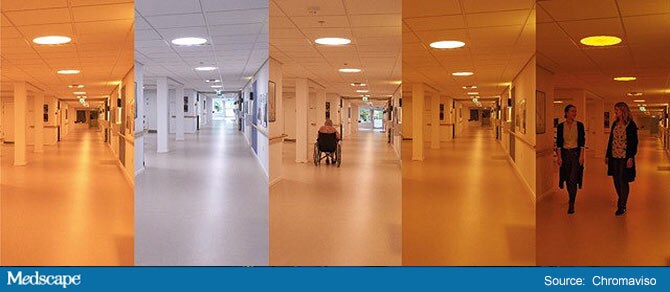Adding two MRI-related variables into a risk calculator with standard clinical measures could reduce the number of unnecessary biopsies in men with elevated prostate-specific antigen (PSA) scores while maintaining a “high rate” of diagnosis of clinically significant prostate cancers, concludes a new study.
The variables are prostate volume (as derived via MRI) and the Prostate Imaging-Reporting and Data System version 2 (PI-RADSv2), a relatively new tool intended to reduce problematic variability among radiologists who read multiparametric MRI scans.
“It has become more common that the results of multiparametric MRI are used to guide clinical decision-making on prostate biopsy,” observe senior study author, Baris Turkbey, MD, from the Molecular Imaging Program, National Cancer Institute (NCI), Bethesda, Maryland, and colleagues.
But it is also “unclear,” they say, whether MRI itself adds value to risk calculators that are based on standard multivariable clinical parameters, such age, race, and PSA score.
So a multi-institutional team led by NCI staff addressed the issue.
Their new analysis was published online February 22 in JAMA Oncology.
All 651 patients in the study, which includes a development cohort and a validation cohort, had a potential warning sign of prostate cancer (elevated PSA or abnormal result on digital rectal exam) and had at least one lesion detected with subsequent MRI. After their MRI, the men’s “index” lesion was assigned a PI-RADSv2 category. The men with a category 3 or higher lesion underwent MRI–transrectal ultrasonography fusion-guided biopsy and a 12-core systematic biopsy.
The development cohort consisted of 400 men with no previous diagnosis of prostate cancer who were seen at the NCI in Bethesda.
The validation cohort consisted of 251 men seen at the University of Chicago Medical Center in Illinois and the University of Alabama, Birmingham.
Overall, 193 (48.3%) of the 400 patients in the development cohort and 96 (38.2%) of the 251 patients in the validation cohort had clinically significant prostate cancer, defined as a Gleason score greater than or equal to 3 + 4. The mean age at biopsy was around 64 years in both groups.
In the two-part study, the “MRI [risk-prediction] model” using standard clinical measures (such as the above-mentioned age, race, and PSA value), plus the two MRI-derived elements, outperformed the “baseline model” (ie, standard clinical measures alone).
In the validation cohort, the area under the curve with the MRI model increased from 64% to 84% compared with the baseline model (P < .001). At a risk threshold of 20%, the MRI model had a lower false-positive rate than the baseline model (46% vs 92%), with only a small reduction in the true-positive rate (89% vs 99%).
The authors explained the importance of the concept of a risk threshold.
“In clinical practice, the threshold for biopsy should be decided after a physician and patient both weigh the relative harm of potentially unnecessary biopsy and benefit of diagnosing clinically significant prostate cancer. Therefore, there is not a single risk threshold that is used to determine who needs to undergo biopsy but rather a range of risk thresholds.”
Thus, in the study’s validation cohort, at the risk threshold of 20%, a total of 38% of biopsies could have been avoided while 89% of clinically significant cancers could still have been identified, the authors say.
Furthermore, at that threshold, in the same cohort, 96 of 251 patients (38.2%) would have avoided a biopsy while 11 of 96 patients with clinically significant disease (11.5%) would have had their cancer missed, write the authors.
The authors also provided findings on net benefit and net reduction in the number of false-positive findings from the study.
They report that the net benefit of the MRI model “was equivalent to performing 27 biopsies per 100 men without negative biopsies, 4 more than the baseline model.”
Additionally, they write, “The net reduction in the number of false-positives based on the MRI model, compared with having to perform a biopsy in all patients with positive MRI results, was equivalent to performing 18 fewer unnecessary biopsies per 100 men, with no increase in the number of clinically significant prostate cancer left undiagnosed.”
“Currently, multiparametric MRI is often considered a singular diagnostic tool in prostate cancer detection. Our study, however, shows that it has to be seen in a broader context,” Dr Turkbey and lead study author, Sherif Mehralivand, MD, also from NCI, told Medscape Medical News in a joint email. “Its main benefit is not the increased detection of cancer but rather the reduction of false-positive results and unnecessary biopsies.”
Its main benefit is not the increased detection of cancer but rather the reduction of false-positive results and unnecessary biopsies.
Dr Turkbey and Dr Mehralivand believe these attributes represent “an important step towards potential solution of the overdetection and overtreatment issue in the PSA screening era.”
They also explained the importance of the PI-RADSv2.
“We…think that PI-RADSv2 will improve standardization in reporting of multiparametric MRI scans in the near future,” they said.
The authors noted that these guidelines “have been perceived very well by the radiologic and urologic community” and are based on a “broader consensus” than was version 1 of the document, which was mainly a product of European institutions; the version 2 steering committee involves a mix of US and European experts.
“Like many new standardization systems, Pi-RADSv2 has its own limitations, and radiologist experts from all over the world have been working together with urologists to optimize this system,” they added.
Other MRI Research
Other teams have investigated use of MRI in the context of prostate cancer risk assessment, as reported by Medscape Medical News. And multiple prediction models include the imaging.
“The model we propose produces results comparable with those previously reported,” say the current study authors.
One effort (Eur Urol. 2017;72:888-896) was very much akin to the development cohort in the current study. But it suffers from not having been validated in another cohort and not having used the latest version of PI-RADS, the current study authors say.
They also point out a limitation of their own study: that patients with negative MRI results did not undergo biopsies, which could contribute to “verification bias.” But, historically, the likelihood of a clinically significant prostate cancer in patients with negative MRI findings is “low”; thus, those men are unlikely to benefit from a biopsy, they say.
The new MRI risk assessment model should be used in other medical centers, say the authors, for further prospective validation.
The study was funded by the National Cancer Institute. Two investigators report financial ties to corporate divisions of Phillips.
JAMA Oncol. Published online February 22, 2018. Abstract
Follow Medscape senior journalist Nick Mulcahy on Twitter: @MulcahyNick
For more from Medscape Oncology, follow us on Twitter: @MedscapeOnc


